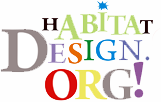This is tutorial make simple stack effects for
inspiration. The main idea is to have one item shown initially and then,
on some trigger, more items are revealed as decoration. As seen in
image grids or on scroll websites as creative effect.
You have certainly seen these kind of effects, mostly used in image
galleries, but also on single items on a page: one item is shown
initially and then, with some trigger, more items are revealed, normally
as decoration. One can imagine a couple of triggers for these effects:
item hover, on load, on scroll and on click effects. When using some
subtle, but creative moves, we can make some interesting effects that
elevate a static design.
Note that for some of the effects we use perspective and 3D transforms so they will only work in modern browsers.
The beautiful illustrations are by Isaac Montemayor. Check out his Dribbble profile, he’s an awesome illustrator.
The markup is the following:
We use a figure with three or four images.
All images, except for the last one, will be absolute:
Setting one of the images to position relative will give our parent figure a height.
The beautiful illustrations are by Isaac Montemayor. Check out his Dribbble profile, he’s an awesome illustrator.
The markup is the following:
1
2
3
4
5
6
| <figure class="stack stack-sidegrid"> <img src="img/1.png" alt="img01"/> <img src="img/3.png" alt="img03"/> <img src="img/4.png" alt="img04"/> <img src="img/2.png" alt="img02"/></figure> |
All images, except for the last one, will be absolute:
1
2
3
4
5
6
7
8
9
10
11
12
13
14
15
16
17
18
19
| .stack { margin: 20px auto; width: 400px; padding: 0; position: relative; max-width: 100%;}.stack img { max-width: 100%; position: absolute; top: 0; left: 0; transition: all 0.3s;}.stack img:last-child { position: relative;} |
An example effect is the following:
This effect moves the items to the corners and scales them down.
Note that for some of the examples (grids), we simply set the width of the images to something smaller. You’d of course use a accordingly sized image.
source: http://tympanus.net/codrops/2014/03/05/simple-stack-effects/?utm_source=feedburner&utm_medium=feed&utm_campaign=Feed%3A+tympanus+%28Codrops%29
1
2
3
4
5
6
7
8
9
10
11
12
13
14
15
16
17
18
19
20
| /* Bouncy Grid */.stack-bouncygrid.active img { transform: scale(0.48);}.stack-bouncygrid.active img:nth-child(4) { transform-origin: 0 0;}.stack-bouncygrid.active img:nth-child(3) { transform-origin: 100% 0;}.stack-bouncygrid.active img:nth-child(2) { transform-origin: 0 100%;}.stack-bouncygrid.active img:first-child { transform-origin: 100% 100%;} |
Note that for some of the examples (grids), we simply set the width of the images to something smaller. You’d of course use a accordingly sized image.
source: http://tympanus.net/codrops/2014/03/05/simple-stack-effects/?utm_source=feedburner&utm_medium=feed&utm_campaign=Feed%3A+tympanus+%28Codrops%29


 RSS Feed
RSS Feed
 Twitter
Twitter
 Facebook
Facebook
0 komentar:
Post a Comment